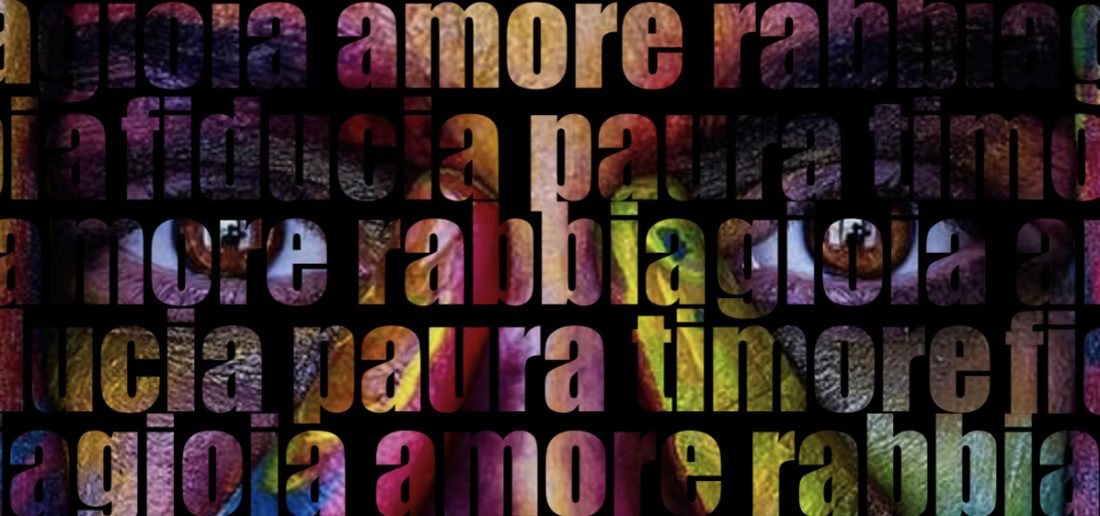
Designing an emotion.
1/10/2022
Emotions are a fundamental aspect of our lives, they guide us, enrich us and also lead us to make choices.
Antonio Damàsio, a well-known neuroscientist, encourages us to listen to our emotions. Through his writings, he conveys the value of emotions as cognitive dimensions for every human being. Emotion is therefore the dynamic up-and-down factor that leads us to choose the goals we set for ourselves in life.
Following recent neuroscientific discoveries and confirmation of the importance of the emotional factor, the use of emotions is ubiquitous across all sectors – in marketing, by means of neuromarketing techniques that encourage customers to follow brands for a long time; in design, to design objects capable of engaging emotionally; in digital communication, with the maniacal desire to share our emotional states.
When it comes to brand design, can we design an emotion? If successful brands are those that express authenticity and transparency, how can we put forward an authentic emotion through design?
Creating a visual identity with a visual system that is unique, personal and at the same time arouses emotions visually is no easy task.
We could turn to all the possible notions of semiotics, or refer to manuals on visual perception, resort to the theories of the Bauhaus School, but without ever having the impression of reaching the solution. Many designers consider all this to be pure utopia or an unattainable and even a questionable ideal.
I like the idea of having a more emotional and entirely new and unexplored design vision to pursue, finding a visual intuition that comes from our inner world.
We can represent an emotion through colour, or by selecting less than perfect photographic languages to convey truth, or express not only positive and perfect values but also imperfect ones, because beauty lies in imperfection and embodies the truth of things.
This requires a huge effort, working hard on our inner self and visual sensibility and finding and studying those strong, simple, ancestral visual elements that provoke something profound that will make a brand more human and closer to the customer.
We are creative and sensitive people and every day I ask my students, before designing, to listen to their feelings, to avoid creating by means of a simple graphic exercise.
Creating “from gut feeling” is the first step to take – there is no specific rule to follow, we have to turn on that light inside us when we feel something and transform it into a visual language with the means available to us as designers.
This is a huge challenge for us brand designers, and as the great Luis Sepulveda used to say, “Challenges are not boring and will propel anyone who dares to accept them”.
\\\\\\\\\\\\\\\\\\\\\\\\\\\\\\\\\\\\\\\\\\\\\\\\\\\\\\\\\\\\\\\\\\\\\\\\\\\\\\\\\\\\\\\\\\\\\\\\\\\\\
Progettare un’emozione.
Le emozioni sono un aspetto fondamentale della nostra vita, ci guidano, ci arricchiscono e ci fanno fare delle scelte. Antonio Damàsio noto neuroscienziato ci invita ad ascoltare le nostre emozioni e attraverso i suoi testi trasmette dignità e valore alle emozioni considerandole delle dimensioni cognitive per ogni essere umano.
L’emozione quindi è quel fattore dinamico up e down che ci fa scegliere gli obiettivi che ci prefiggiamo nella vita. Dopo recenti scoperte neuroscientifiche e la conferma dell’importanza del fattore emotivo, l’uso delle emozioni è onnipresente in tutti i settori;
nel marketing attraverso le tecniche di neuromarketing le quali tecniche sollecitano i clienti a seguire i loro brands per lungo tempo; nel design per progettare oggetti capaci di coinvolgere emotivamente; nella musica con monologhi all’interno di brani musicali; nella comunicazione digitale con il bisogno maniacale di condividere i nostri stati emozionali..
Nel brand design possiamo progettare un’emozione?
Se i brands di successo sono quelli che esprimono autenticità e trasparenza come possiamo noi progettare un’emozione autentica?
Realizzare un’identità visiva con un sistema visivo unico, caratterizzante ma nello stesso tempo che suscita emozioni visivamente non è cosa da poco.
Possiamo aiutarci con tutte le nozioni possibili di semiotica, oppure rifarsi a manuali di percezione visiva, ricorrere alla Scuola della Bauhaus e ai suoi studi di scienziati che hanno dedicato la loro vita alle loro teorie, ma avremmo sempre l’impressione di non arrivare alla soluzione.
Molti considerano tutto questo una pura utopia o un ideale irrealizzabile ed è anche opinabile.
Ascolto le emozioni, mi piace l’idea di avere una visione progettuale del tutto nuova da perseguire, inesplorata, trovando un intuizione visiva che nasce dal nostro mondo interiore.
Possiamo dare forma ad un’ emozione attraverso il colore, oppure selezionando dettagli fotografici non perfetti per dare autenticità, o esprimere non solo valori positivi e perfetti ma anche imperfetti, perché la bellezza è nell’ imperfezione e porta la verità delle cose.
La cosa fondamentale non è tanto progettare con il fine di emozionare, ma emozionarsi durante il processo creativo cosi da poter trasferire ciò che uno sente.
Questo richiede un grande sforzo, quello di lavorare molto sulla nostra interiorità e sensibilità visiva e su la capacita di trasferire quello che sentiamo durante la realizzazione di un progetto nel caso specifico di un brand. Trovare e studiare quelli elementi visivi forti, semplici, ancestrali che provocano qualcosa di profondo da rendere un brand unico e + “human”.
Ogni giorno invito sempre i miei studenti a progettare “di pancia” ed è questo il primo step da fare, non c’è una regola precisa da segure, dobbiamo accendere quella luce dentro di noi nel momento che sentiamo qualcosa e senza paura trasformarla in un linguaggio visivo con tutti i mezzi che noi designer conosciamo.
E’ una grande sfida per noi brand designer.!
“Le sfide non fanno annoiare e fanno volare solo chi osa farle.” (Luis Sepùlveda).

No Comments